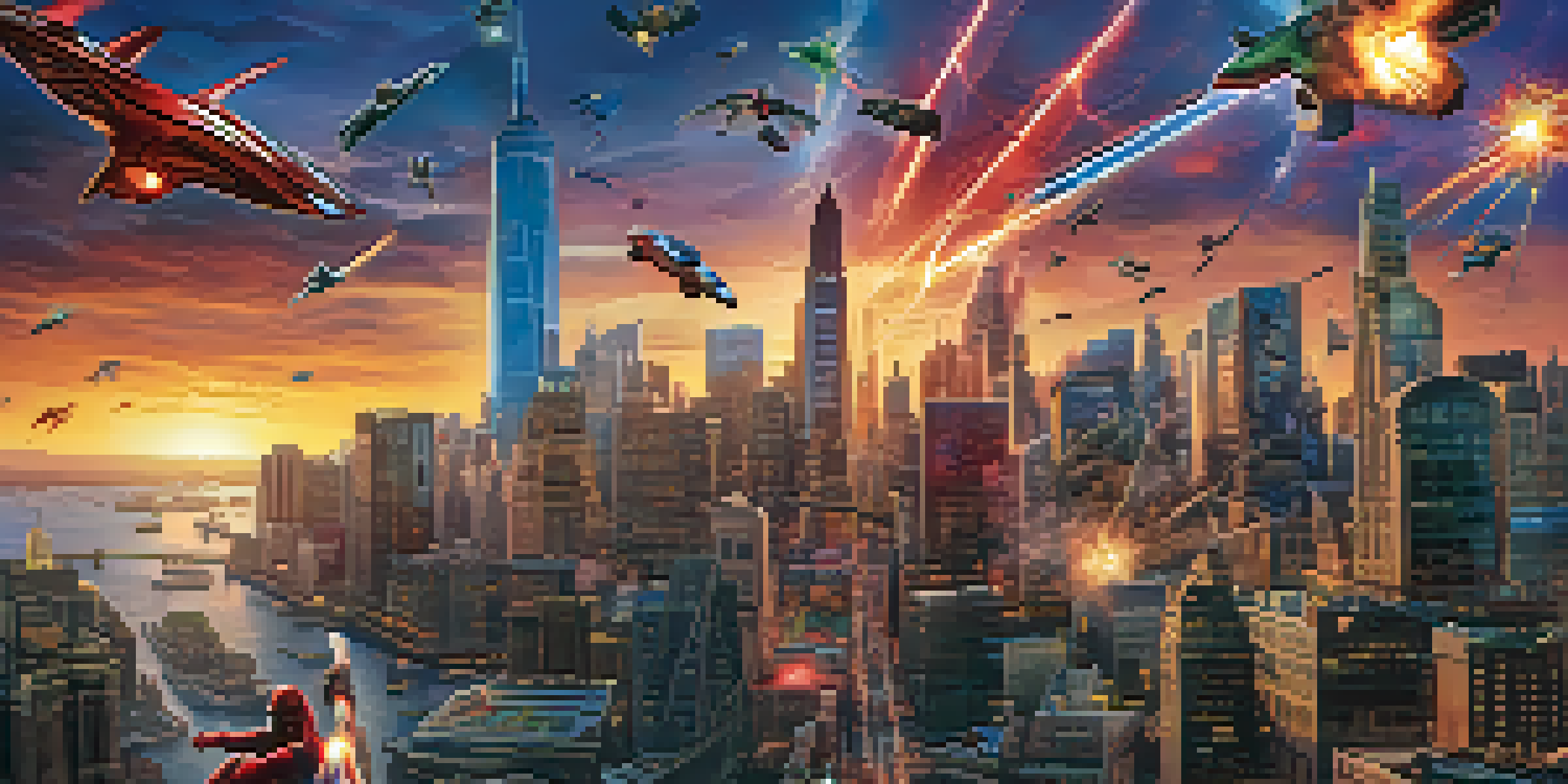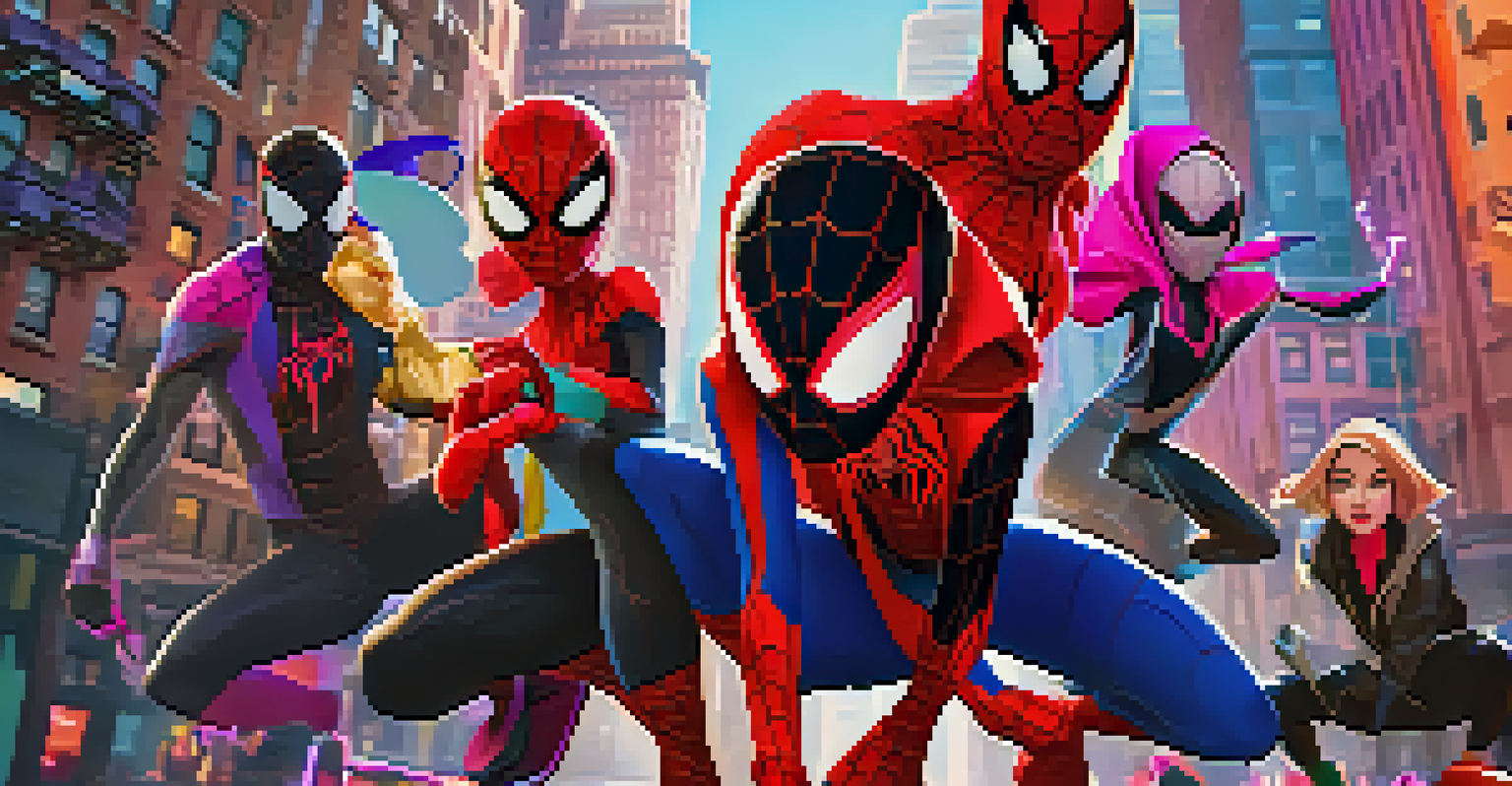Cinematic Universes Around the Globe: A Worldwide Phenomenon

What Are Cinematic Universes and Why Do They Matter?
Cinematic universes are interconnected stories featuring a shared setting, often involving multiple characters and timelines. You can think of them like a giant puzzle, where each piece contributes to a bigger picture. This approach allows filmmakers to build deeper narratives and expand character arcs over time, which keeps viewers invested.
A cinematic universe is a world where every detail matters and every character has a story to tell.
The significance of these universes lies in their ability to create a community of fans who are eager to explore every detail of the story. For example, the Marvel Cinematic Universe (MCU) has transformed how audiences engage with superhero tales, inviting them to connect dots across films and series. This interconnectivity fosters a sense of belonging among fans, who enjoy discussing theories and speculations.
Additionally, cinematic universes often attract a broader audience base, increasing box office revenue and merchandising opportunities. By creating a web of characters and stories, studios can capitalize on established brands while introducing new ones, ensuring a continuous flow of content that resonates with viewers.
The Marvel Cinematic Universe: A Trailblazer in Storytelling
Launched in 2008 with 'Iron Man', the Marvel Cinematic Universe has set the standard for cinematic universes worldwide. With its carefully crafted phases that weave multiple storylines together, Marvel has captivated audiences for over a decade. Each new release builds anticipation for the next installment, often teasing future connections and characters.

What makes the MCU particularly engaging is its ability to balance standalone stories with overarching narratives. Take 'Black Panther' as an example; while it tells a unique story, it also fits seamlessly into the broader MCU, enriching the experience for fans. This strategy not only enhances viewer satisfaction but also encourages repeated viewings.
Cinematic Universes Foster Community
These interconnected stories create a community of fans who engage deeply with narratives and character arcs.
Marvel's success has inspired various studios to adopt a similar approach, leading to an explosion of cinematic universes in different genres. From superhero epics to horror franchises, the impact of the MCU is undeniable, paving the way for a new era of interconnected storytelling.
DC Extended Universe: Competing with Marvel's Dominance
The DC Extended Universe (DCEU) was launched to rival the success of the MCU, kicking off with 'Man of Steel' in 2013. Despite facing challenges in establishing a cohesive narrative, DC has made strides in recent years, with films like 'Wonder Woman' and 'Aquaman' gaining critical and commercial success. Their approach often emphasizes darker themes, appealing to a different audience segment.
The power of storytelling in cinema is in its ability to connect us across different worlds, cultures, and experiences.
A unique aspect of the DCEU is its willingness to explore different tones and styles within its films. For instance, 'The Suicide Squad' embraced a more comedic and irreverent tone, while 'Zack Snyder's Justice League' offered a more serious and dramatic interpretation. This diversity allows for a broader range of storytelling, captivating various fanbases.
Recently, DC has begun to embrace the multiverse concept, which allows for alternate versions of characters and stories. This strategy not only revitalizes the franchise but also opens the door for exciting crossovers, further engaging fans who love the idea of multiple realities colliding.
Asian Cinematic Universes: A Rising Power in Film
While Hollywood has dominated the cinematic universe landscape, Asian filmmakers are making significant strides with their own interconnected stories. For instance, the 'Conjuring' universe, which originated in the West, has inspired Asian horror films like 'The Ring' and 'Shutter' to create their own shared universes. These films often blend cultural elements, offering unique storytelling perspectives.
The 'MonsterVerse' franchise, which includes films like 'Godzilla' and 'Kong: Skull Island', showcases how Asian cinema can successfully integrate into a larger global narrative. By combining iconic creatures from Japanese folklore with Western storytelling techniques, this franchise appeals to a diverse audience. It’s a testament to how cinematic universes can transcend cultural barriers.
Diversity in Cinematic Universes
Filmmakers are increasingly focusing on diverse cultural perspectives, enriching narratives and broadening audience appeal.
Additionally, franchises like 'The Detective Chinatown' series have gained popularity, showcasing the potential for humor and action within Asian cinema. As these universes continue to evolve, they demonstrate that the landscape of interconnected storytelling is becoming increasingly global.
The Importance of Shared Universes in Animation
Cinematic universes aren't just limited to live-action films; animated universes are also gaining traction. The 'Spider-Verse' franchise exemplifies this, with its unique animation style and multi-dimensional storytelling. This approach not only appeals to younger audiences but also resonates with adults, creating a shared experience across generations.
Animation allows for creative freedom that can lead to wildly imaginative worlds. For example, the 'How to Train Your Dragon' series has expanded into television and spin-off films, creating a rich universe that explores friendship, adventure, and personal growth. This interconnectedness enhances viewer engagement, as fans become invested in the characters and their journeys.
Moreover, animated universes often tackle complex themes in a way that is accessible to all ages. By blending humor, action, and emotional depth, these stories resonate on multiple levels, encouraging discussions about deeper issues while providing entertainment.
Cinematic Universes in Television: A New Frontier
Television has embraced the concept of cinematic universes, with many series creating interconnected storylines that keep viewers coming back for more. Shows like 'The Arrowverse', which includes 'Arrow', 'The Flash', and 'Supergirl', have successfully blended characters and plots across multiple series, creating a cohesive viewing experience. This format allows for character development over longer arcs compared to traditional films.
Streaming platforms have also capitalized on this trend, with series like 'The Witcher' expanding on the lore established in books and video games. By exploring various timelines and characters, these shows entice audiences to dive deeper into the story. This interconnectivity not only enriches the narrative but also encourages viewers to engage with the source material.
Future Trends in Storytelling
Emerging trends like the multiverse concept and technological advancements promise to transform how cinematic universes are experienced.
The rise of cinematic universes in television signifies a shift in how stories are told, emphasizing character-driven narratives and long-term engagement. As viewers increasingly seek binge-worthy content, the demand for interconnected stories will likely continue to grow.
The Future of Cinematic Universes: Trends to Watch
As cinematic universes continue to evolve, several trends are emerging that are worth keeping an eye on. One trend is the increasing use of multiverse concepts, which allow for limitless storytelling possibilities. This approach not only keeps existing franchises fresh but also invites new audiences to explore alternate realities and characters.
Another trend is the focus on diversity and representation within these universes. Filmmakers are increasingly recognizing the importance of telling stories from various cultural perspectives, leading to richer narratives. This shift not only broadens the appeal of cinematic universes but also fosters inclusivity in storytelling.

Finally, as technology advances, we can expect cinematic universes to experiment with new formats and platforms. From virtual reality experiences to interactive storytelling, the possibilities are endless. As audiences become more engaged, the way stories are told will continue to transform, promising exciting developments in the world of cinematic universes.